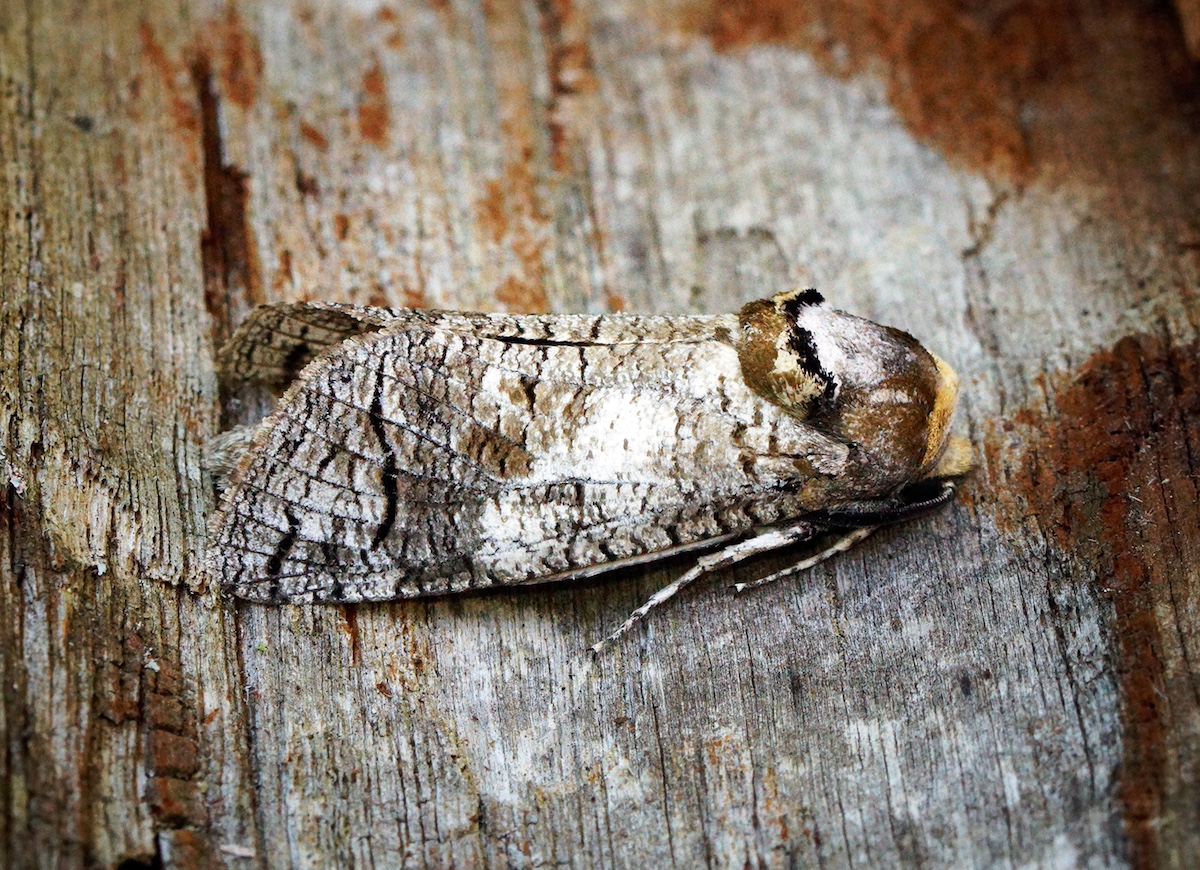
Photo © Ben Sale
Cossus cossus, the goat moth, is a moth of the family Cossidae. It is found in Northern Africa, Asia and Europe.
This is a large heavy moth with a wingspan of 68–96 mm. The wings are greyish brown and marked with fine dark cross lines. The moth flies from April to August depending on the location.
The caterpillars have a red/purple stripe across the back and a black head. They reach a length of 9–10 cm. The caterpillars feed in the trunks and branches of a wide variety of trees (see list below), taking three to five years to mature. The caterpillar holes can be found low on the stem (maximum 1.0–1.5 m above the ground). When ready to pupate the caterpillar leaves the tree to find a suitable spot.
The species prefer humid environments. Both the larva and moth have a smell reminiscent of goat, hence its name.
Pliny reported in Natural History that a grub which he gives the name cossus was considered a Roman delicacy after it was fed with flour. Some writers have equated this with Cossus cossus, but Pliny specifies that his cossus is found in oak trees, which makes this identification unlikely. Pliny's cossus is more likely to have been the larva of the beetle Cerambyx heros.
It has a preference for Populus, Quercus and Salix.
Cossus balcanicus Lederer, 1863 from Bulgaria is probably a hybrid between C. cossus and Lamellocossus terebrus (Denis & Schiffermüller, 1775).
Source: Wikipedia
The primary larval foodplants are Alder (Alnus glutinosa), Apple (Malus domestica), Ash (Fraxinus excelsior), birches (Betula spp.), English Elm (Ulmus procera), Pear (Pyrus communis), Pedunculate Oak (Quercus robur), Plum (Prunus domestica ssp. domestica), poplars (Populus spp.), Sweet Chestnut (Castanea sativa) and willows (Salix spp.).